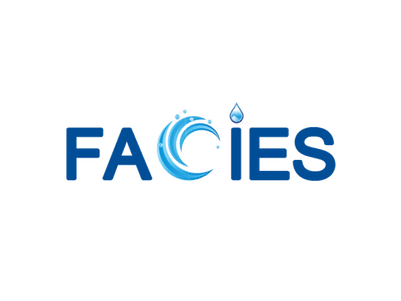FACIES
online identification of Failure and Attack on interdependent Critical InfrastructurES
- Funded by the EU FP7 (HOME/2011/CIPS/AG/4000002115)
- Duration: 01/09/2012 to 30/04/2014
- Official website
Modernization of critical infrastructures is causing important architectural complexities with strong dependences on information systems. The need to integrate distributed automatic systems with the capability to prevent and mitigate anomalous situations is imminently necessary so as to ensure an acceptable level of protection. These anomalous situations can become: from hardware/software errors to failures, natural incidents, accidents and attacks (either physical and cyber attacks).
The FACIES project[1] therefore aims to the provision of distributed and automatic preventive solutions that help underlying systems guarantee their resilience and survivability at all times. This way, it is possible to offer a robust cooperation between entities which can share data streams irrespectively of the situation; i.e. either a normal situation or a threatening situation. This also means to foresee concrete solutions able to improve information management, delivering useful hints for information sharing during crisis situations, in addition to facilitating cooperation between public authorities and private entities under a continued control of threats.

Given that the vast majority of critical infrastructures are controlled by SCADA systems, the goals to achieve by NISC Lab within the FACIES project are twofold. On the one hand, NICS is in charge of addressing the detection of anomalies[2][3] and stealth attacks[4] in SCADA systems, as well as the provision of a SOTA related to advanced automatic detection[3] and response[4] for these of types of threats. On the other hand, NICS Lab has actively collaborated with the rest of partners for discussion and resolution on-going of existing problems, data dissemination, integration of solutions and validation in laboratory.
The results of the FACIES project have been very varied, in terms of protection[1], detection[2][3][5][6][7] and response[4], as also indicated below in the references section.
References
- Cristina Alcaraz and Javier Lopez (2013): FACIES: online identification of Failure and Attack on interdependent Critical InfrastructurES. 2013.
- Cristina Alcaraz and Javier Lopez (2014): Diagnosis Mechanism for Accurate Monitoring in Critical Infrastructure Protection. In: Computer Standards & Interfaces, vol. 36, pp. 501-512, 2014, ISSN: 0920-5489.
- Lorena Cazorla and Cristina Alcaraz and Javier Lopez (2013): Towards Automatic Critical Infrastructure Protection through Machine Learning. In: 8th International Conference on Critical Information Infrastructures Security, pp. 197-203, Springer Springer, Amsterdam, The Netherlands, 2013, ISSN: 0302-9743.
- Lorena Cazorla and Cristina Alcaraz and Javier Lopez (2015): Awareness and Reaction Strategies for Critical Infrastructure Protection. In: Computers and Electrical Engineering, vol. 47, pp. 299-317, 2015, ISSN: 0045-7906.
- Lorena Cazorla and Cristina Alcaraz and Javier Lopez (2018): Cyber Stealth Attacks in Critical Information Infrastructures. In: IEEE Systems Journal, vol. 12, pp. 1778-1792, 2018, ISSN: 1932-8184.
- Cristina Alcaraz and Lorena Cazorla and Gerardo Fernandez (2015): Context-Awareness using Anomaly-based Detectors for Smart Grid Domains. In: 9th International Conference on Risks and Security of Internet and Systems, pp. 17-34, Springer International Publishing Springer International Publishing, Trento, 2015, ISBN: 978-3-319-17126-5.
- Cristina Alcaraz and Javier Lopez (2014): WASAM: A Dynamic Wide-Area Situational Awareness Model for Critical Domains in Smart Grids. In: Future Generation Computer Systems, vol. 30, pp. 146-154, 2014, ISSN: 0167-739X.

